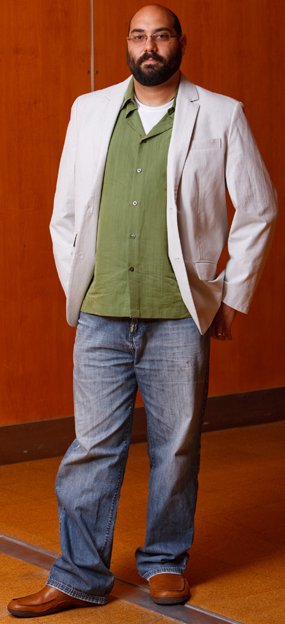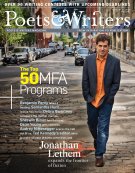In June Matthew Shenoda, author of the poetry collections Somewhere Else (Coffee House Press, 2005) and Seasons of Lotus, Seasons of Bone (BOA Editions, 2009), was named the first Assistant Provost for Equity and Diversity at California Institute of the Arts (CalArts), in Valencia. Shenoda, a former faculty member of Goddard College's low-residency MFA program in Port Townsend, Washington, recently spoke about his new position, part of an institute-wide initiative to promote intercultural awareness and develop support mechanisms for students from varying ethnic backgrounds.

What are your plans?
I see my role as helping various forms of diversity—and I use that term pretty broadly. Obviously racial and cultural diversity is a significant issue, but I am also interested in issues of aesthetic diversity and making sure various aesthetic traditions in each field are represented.
What are some specific things you'd like to do at CalArts?
I'd like to develop lecture series and town hall meetings that bring in artists who push forward issues of diversity. I'd like to have a hand in hiring and faculty retention, and I plan to help students develop groups and provide support for groups that already exist. Also, I can support students by setting up film nights and readings and discussions. I am someone to help guide students through problems, disciplinary or otherwise, with specific classes and faculty.
CalArts has been around since 1961. Why create this position now?
It's a little difficult for me to answer that question since I wasn't there [when the decision was made to create the position], but my understanding is that the faculty has been desiring this for years. There is a very diverse student body—and they've been really good about that—but I don't think the faculty is as diverse as it could be. I would like to see more gender, racial, and aesthetic diversity. I haven't seen any Native American faculty, so that's a perspective, a worldview, that isn't being shared with students.
Why do you think some art schools aren't more diverse?
It's a complicated scenario. The cost of art school is one factor, and then there's the way that people are socialized. People don't necessarily think, "I can go to art school and become an artist." It's not seen as a viable option. The arts are seen as a hobby in this country, as extracurricular, especially for people coming from working-class families. Institutions have to push that idea a little further, and try to cultivate those talents. Also, a lot of students of color whom I talk to after readings say they feel they have to explain their work; they feel they're outside the framework—the aesthetic framework in a given classroom. I believe in multiplicity, and I would argue that the curriculum in most places leans more toward the Eurocentric: The books we read, the paintings and painters that we value, what is considered classical training in music, all of these things have European roots. This is part of a tradition of a certain sector of this country, so I don't want to say that it should be eliminated or anything like that, but why can't a literature student understand European literature and also have a working knowledge of African American, Latino, or American Indian literature? We always say we don't have time for these other things, but we can do more. I don't believe we're that limited.
Rochelle Spencer teaches at LaGuardia Community College, CUNY. She is working on a novel about black female space travelers.








